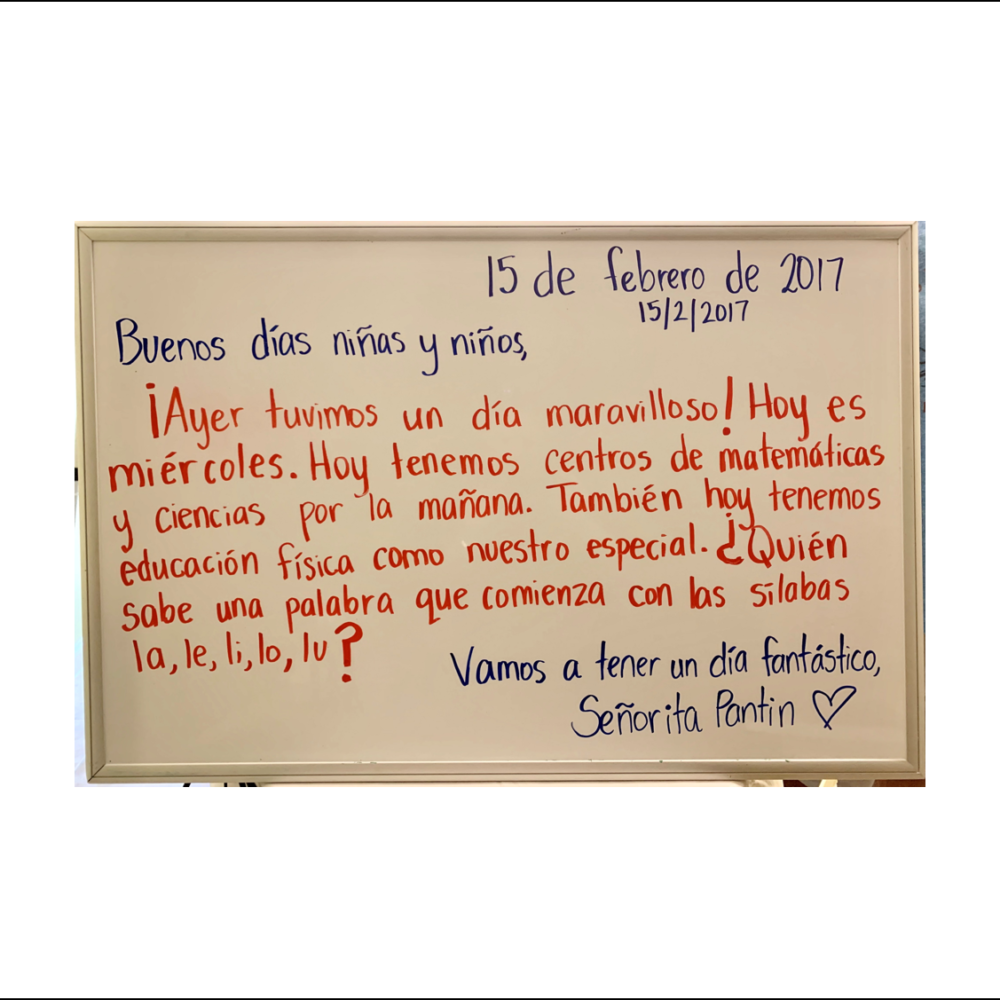Teaching the young ones, especially in a dual language program, comes with its’ set of added challenges. How will we get our students talking? How will we build a classroom community every day and make sure our students are talking in the target language every day? One of the main tools I utilized when I taught Kinder Dual Language was having a daily morning message.
Yes, I know… program schedules are usually very tight and we are always on-the-go, but it’s crucial to allow at least a couple of minutes for targeted vocabulary and oral language practice on a more “social” level (on top of the academic vocabulary and oral language your students get during centers and whole group lessons, etc). Using a daily morning message during a short “whole group circle time” allows for children to get comfortable, lower their anxiety level and get talking!
I think that this circle time and incorporating that daily message is also important for several reasons, one being that it provides a routine that children learn to expect. However, another added benefit is that it also builds students linguistic confidence and sets up the rest of the day nicely. After having done this every day, I had many children repeating my greeting (“Buenos días niños y niñas”) and my closing line (“Vamos a tener un día fabuloso/maravilloso/extraordinario/fantástico, Señorita Pantin”). I loved seeing my students saying these words and following along because they are speaking in Spanish and learning some words/phrases in the target language!
I always started the message by saying how our day went yesterday (always positive!) and I always included the Special that we have that day so that students knew what to expect. I also included what we are doing that morning together (since they switched after lunch and went to the English side). Something that I also started doing more after the first initial messages is making my punctuation marks thicker in order to point them out visually for students when they are looking at the message and hearing me read it. Since in Spanish we use a question mark at the beginning and at the end of a sentence, I made them thick so that students can start distinguishing this difference in both of the languages.
I think that this time together was very important in setting up the day and having students know the expectations for their morning. For dual language programs, in the target language, it is essential to provide many opportunities for the students to hear the language during a routine but also to have a chance to talk. I tried to provide children with opportunities to review some of the ideas/concepts we had worked on/were currently working on during the week. Incorporating questions in the morning message allowed for my kids to become involved and feel at ease in answering. I also modeled answers and would include sentence stems to help them navigate forming their own answers! Even with a tight schedule, these little moments are significant and important in fostering community, developing linguistic confidence and setting up a successful day of learning (and fun of course!).
